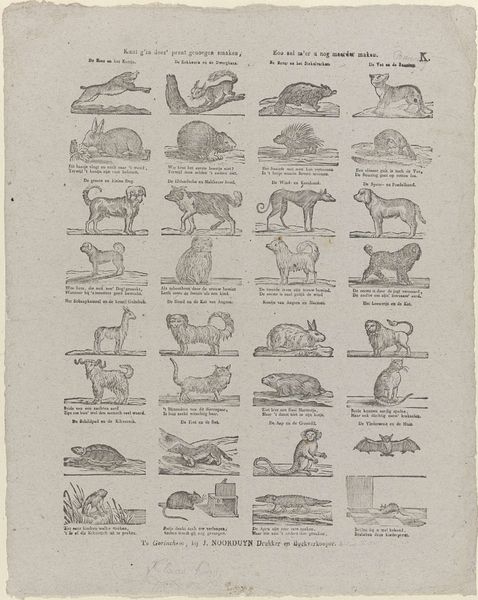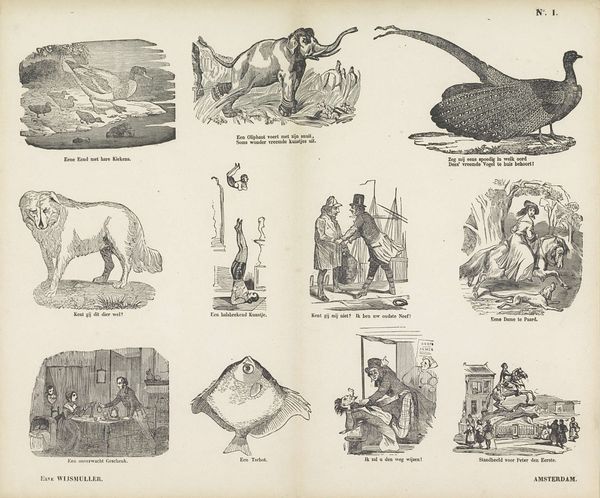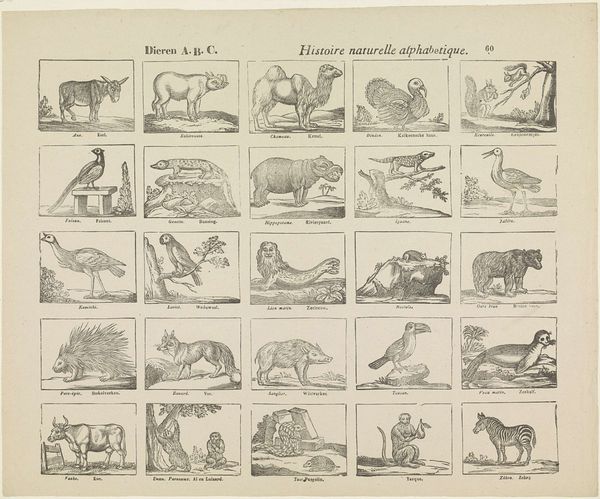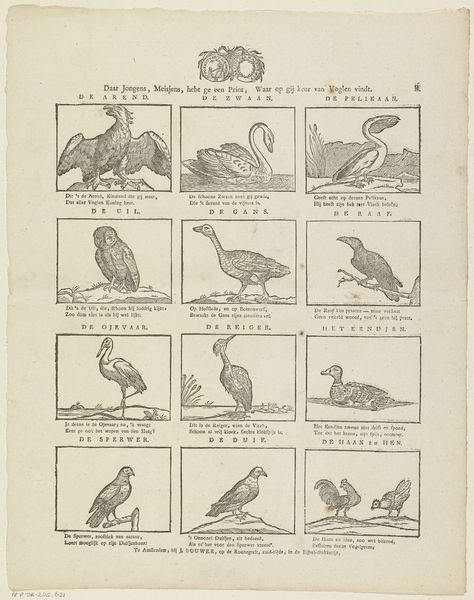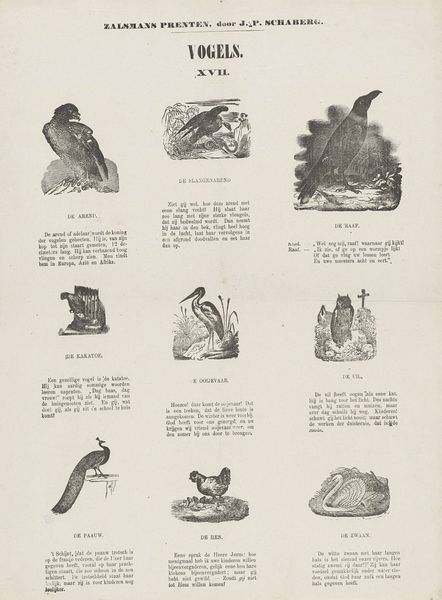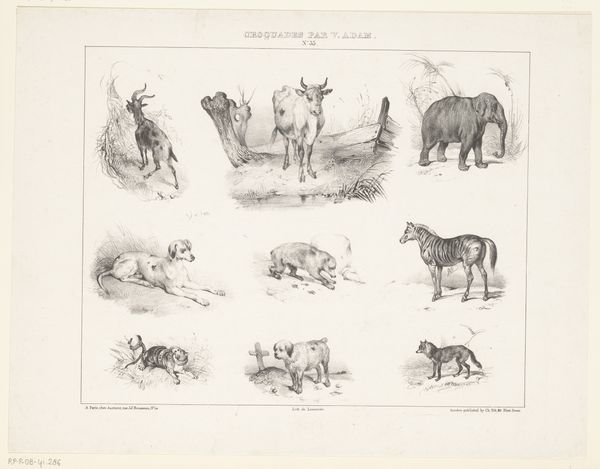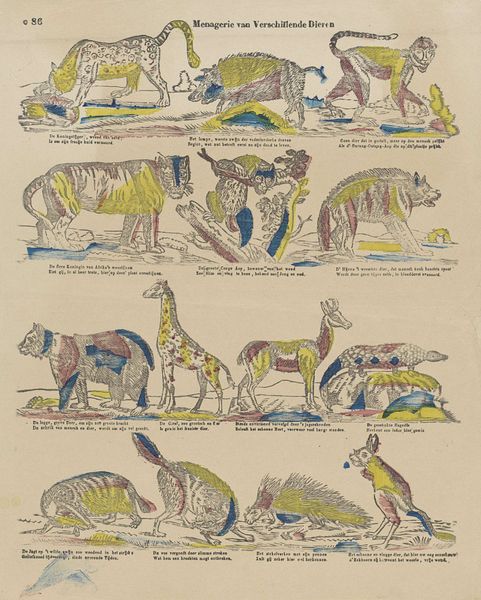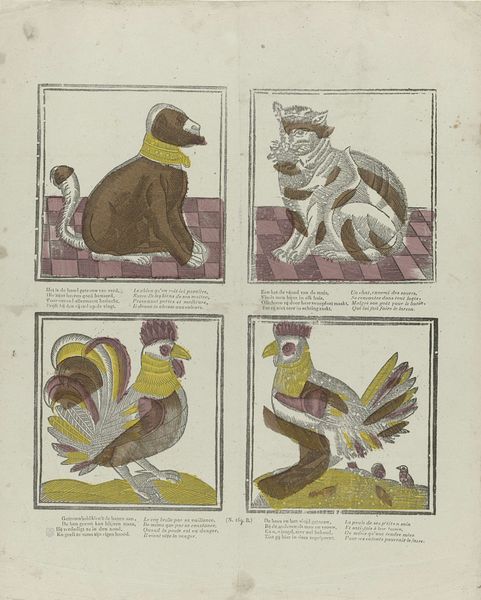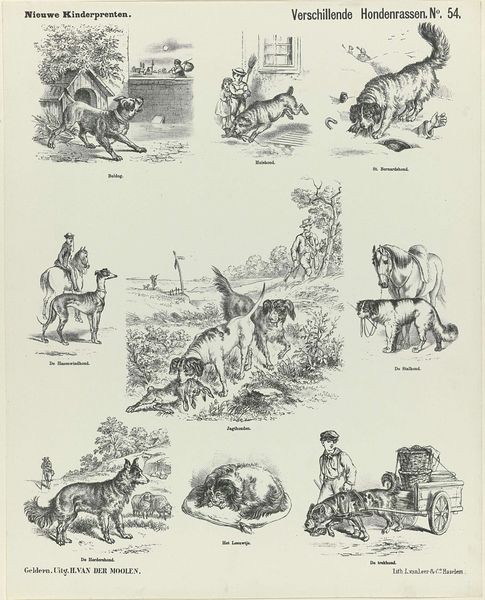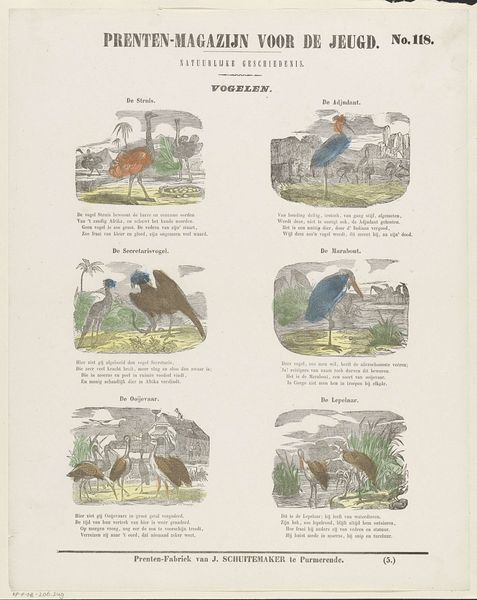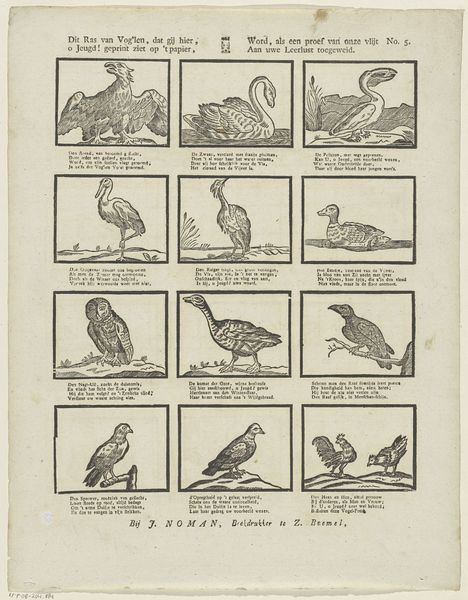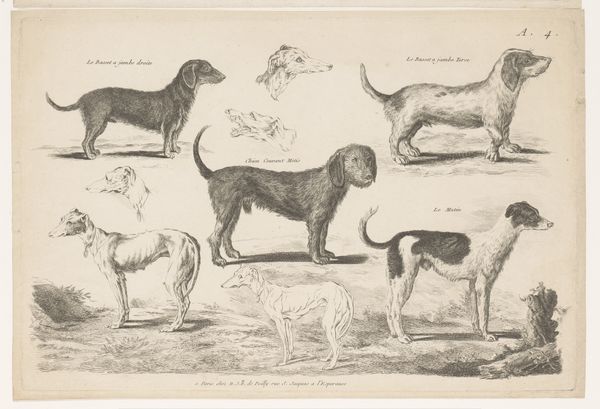
drawing, print, etching, paper, ink, engraving
#
drawing
#
animal
#
dutch-golden-age
# print
#
etching
#
paper
#
ink
#
genre-painting
#
engraving
#
realism
Dimensions: height 339 mm, width 429 mm
Copyright: Rijks Museum: Open Domain
Curator: Welcome. Here we have "Verschillende voorstellingen," a print incorporating etching and engraving by Erve Wijsmuller, dating from around 1828 to 1913. It's currently held in the Rijksmuseum. Editor: My immediate reaction is a sense of organized curiosity. It’s a menagerie of sorts, presented with clarity but also a strange emotional detachment. Curator: Indeed. These diverse representations, ranging from domestic animals to exotic creatures, were likely intended for educational purposes, mirroring a growing interest in natural history during that period. We can read this through a lens of colonialism, perhaps, as representations of animals from afar filled Dutch visual culture, shaping popular understandings and even solidifying power dynamics. Editor: I see that, and technically speaking, the meticulous etching lends each animal a distinct texture. Look at the feathery quality achieved on the birds versus the smooth coat of the dog. Note the subtle gradations of tone that imply form. There is such mastery here! Curator: Certainly, the level of detail is noteworthy. And consider the social context: were these images affordable? Who had access to them and how might such depictions reinforced ideas of class and empire? Did viewers question where these animals truly originated? Editor: An interesting question, and formal elements support that, even now. The rigid arrangement, for example—each creature isolated—contributes to a sense of scientific detachment rather than inviting empathy. The composition underscores categorization and control. Curator: Precisely! That echoes a very specific power structure—that of the colonizer observing, cataloging, and thus, symbolically owning. And we mustn’t forget that illustrated texts like these were formative tools for young minds, encoding hierarchies and beliefs about the non-European world. Editor: So well-observed. Though removed from its context, there is an artistry on display in the precision and restraint. It invites close study of its forms, quite apart from its historical and political underpinnings. Curator: It seems a straightforward exercise, at first. But when placed within its socio-historical frame, and considered through modern critical thought, these “various representations” unlock so much. Editor: Agreed, seeing its forms so thoughtfully contextualized, does broaden the piece significantly.
Comments
No comments
Be the first to comment and join the conversation on the ultimate creative platform.
